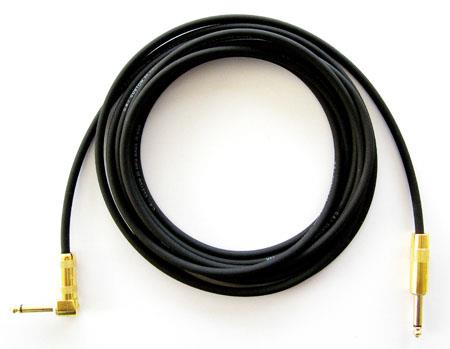 |
| This auction is for one Death Valley Cable Company 15-foot guitar cable with one straight 1/4" TS plug and one right-angle 1/4" TS plug, both in gold plate. (Yes, you can order ANY custom length or nickel-plated plugs; just ask.) |
Why buy a guitar cable mass-produced in an offshore sweatshop when you can buy one for the same price that's beautifully handmade in the USA from the world's finest materials?
Buy directly from the manufacturer, and $AVE. No middle men; no high-cost packaging that does NOTHING to improve product quality; no race-car drivers paid millions to wear our logo. You get what really matters: A meticulously crafted guitar cable for substantially less money.
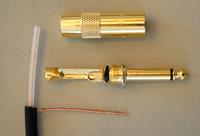 |
 |
 |
 |
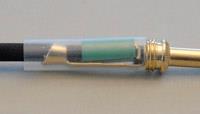 |
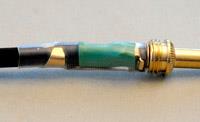 |
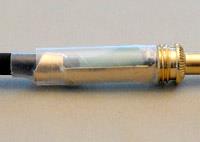 |
 |
| Just a few of the steps to assemble one DVCC super cable; note shield and center wires are hand twisted before assembly and tinned, eliminating stray wire "hairs." Even wires in expensive cables are not twisted or tinned. Plus, we're the only ones who meticulously cut and apply three tiny layers of shrink-tube insulation inside EACH jack (see pictures 5, 6 and 7 above). |
|
You have a 1957 all-original hand-wired Strat and a great hand-wired tube amp. What do you use to connect the two? Don't trust the most critical part of your signal path to a cheesy mass-produced cable, made with $1 jacks and $2 worth of bulk cable.
Entirely handmade!
Now, you have a choice: Death Valley Cable Company makes guitar cables entirely by hand. Each cable takes 56 separate manufacturing steps to complete. Just like point-to-point wiring in a coveted vintage guitar amp, NOTHING beats handmade.
Only the finest materials
Every Death Valley Cable is made from the best components money can buy: G & H Show-Saver plugs and 20-gauge custom CBI cable. Time tested for long life and designed to provide the strongest, interference-free signal possible. No wacky jacks or faddish cable materials.
Our guitar cables have perfectly soldered connections, with any exposed wire always tinned and then hand-insulated — THREE layers in the straight plugs (see photos to left). The middle layer is heat-shrink tubing, making wire shifting and shorts next to impossible. We flow solder backwards under the cable insulation to prevent furring.
We consider solder type to be crucial to the unique full-frequency throughput of our cables — so crucial that we consider the exact type and composition of the solder proprietary. Rest assured though that our unique solder blend is of the highest quality, designed to maintain signal clarity and the strongest possible bond between wire and plug.
Not just for guitars
Death Valley Cable Company Hi-Z TS cables are not just for a certain style of guitar playing, nor are they just for guitars. They faithfully and flawlessly transmit the entire sound spectrum — from wall-shaking lows to delicately transparent highs. They're perfect for guitars, bass guitars, stomp box patch cords, synthesizers, drum machines — you name it!
SOLID copper cores
And one reason that DV Cables prevent frequency loss better than other cables is that they use ONLY G & H Show-Saver plugs, the ONLY plug with a solid copper core and the best-designed 1/4-inch TS plug in the world.
Except for silver (too expensive for most people), copper is the best conductor PERIOD. Nothing else even comes close — not steel, brass, chrome-plated steel or some gold-plated "secret" alloy. Not even SOLID gold.
Face it: The whole point of a 1/4" TS plug is to conduct electricity in the most efficient way possible. Other plugs may look cool or have ingenious wire-locking schemes, but they don't have solid-copper cores — so they don't conduct electricity as well.
Takes a licking and keeps on ticking
But that's not the only reason that we use G & H plugs: They take a licking and keep on ticking. For a feature-by-feature comparison with other plugs, see the chart at the end of the ad. But here's what the chart says in a nutshell: Many other plugs are cheaply made to maximize profits. G & H doesn't take manufacturing shortcuts that compromise quality. They make the best-designed, most rugged plug possible. If there was a better plug on the market, we would use it.
CBI Custom 20 AWG cable is state-of-the-art
Nothing insulates wire better than a thick 6mm synthetic rubber jacket. A couple millimeters of brightly colored vinyl (sound familiar?) does nothing to prevent nasty radio interference from infiltrating your cable. Or maybe you like listening to cab drivers grouse about fares in the middle of your shredding solo?
No? Didn't think so. That's why we use CBI Custom Cable. Just under the main insulation, it has a main conductive shield of stranded pure copper wire. For the hot center wire, a full #20 AWG of pure copper carries the signal with minimal loss, not the wimpy 24 or 26 AWG that some other cables have. Of 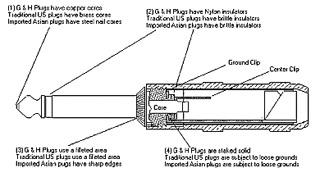 course, the center core is stranded — not solid — for less signal loss. It has a full 2.7 mm of high-grade polyethylene insulation separating the hot center from the shield. course, the center core is stranded — not solid — for less signal loss. It has a full 2.7 mm of high-grade polyethylene insulation separating the hot center from the shield.
But here's where CBI leaves the others behind: It has a semi-conductive layer between the hot wire's jacket and the spiral wrapped copper shield to virtually eliminate microphonics and extraneous noise. See, guitar pickups are coils of wire driven by a tiny TINY amount of electricity. When you introduce the same tiny signal into a cable filled with wire, you basically create another pickup!
Kills microphonics and extraneous noise dead
Ever shake a guitar cable when it's plugged into an amp and hear noises, especially a "thunk" when the cable slaps into something? Those are microphonics created by the cable acting like a pickup. And those microphonics are a HUGE problem, creating low-frequency rumbles and noise that buries mid-range and subtle bass passages.
The semi-conductive layer in the CBI cable prevents both extraneous noise and microphonics. Without it, the noise of someone dancing on the floor near your cable can be as loud as your guitar signal. But with this special layer of insulation, your cable is absolutely dead quiet. So quiet that many customers mistakenly think their new cable is dead when they first plug it into an amp or mixing board.
We twist it so you can hear the twang!
We hand twist both shield and hot wires before soldering, to stop wire furring before it starts. One microscopic metal hair can degrade your signal to almost nothing. Look at other cables. They're rarely twisted because they're made on machines. We also clamp the wire directly to the plug lugs before soldering, so the signal goes directly from wire to plug, not through a big pool of solder.
We fold over a hefty twisted length of shield wire and solder that to the ground lug under the cable. So, the harder you pull on the guitar cable, the more you pull on the ground lug, not on the lug cable clips. We slightly notch the outer cable insulation by hand, so the ground wire is pulled back inside the insulation, a real pain to do, but it adds years to the guitar cable's life because the wire "hairs" can't escape the insulation to cause a short.
Lastly, we inspect EVERY finished cable with magnification to detect any furring. If furring is detected, we cut the plug off and redo the plug assembly.
Prices for different lengths
Yes, you can order any length cable between six inches and 500 feet.
However, we have cables for sale on ebay in eight, 15 and 20-foot lengths. Just contact us if you want a custom length.
Order now; supplies are limited!
Our ads disappear from ebay once in a while because we don't have enough time to keep up with the orders. So a word to the wise: Order your cables whenever you our ebay ad because we don't sell on ebay  every day of every week. Our company is that small ... And it will remain that small. It's really the only way we can assure you of the highest production values and reasonable shipping times. every day of every week. Our company is that small ... And it will remain that small. It's really the only way we can assure you of the highest production values and reasonable shipping times.
How quickly can
I get my cable?
We only put as many ads on ebay as we can reasonably process in a week. So if you order a cable on a Monday, we will manufacture it and ship it out to you in seven working days. Usually it's a lot sooner. If it will be longer than a week, we will e-mail you, but it hasn't happened yet, and we don't expect that it will.
Lifetime guaranteed
We offer a limited lifetime guarantee on all our cables. By limited, we mean  that we will replace the cable at our discretion as long as the cable has not been mistreated and has failed during normal use. A melted mess of a cable that semi-survived a house fire is NOT normal use. that we will replace the cable at our discretion as long as the cable has not been mistreated and has failed during normal use. A melted mess of a cable that semi-survived a house fire is NOT normal use.
Another customer drove the 350 miles to Mammoth Mountain, Calif., with five feet of the cable hanging out the door and dragging on the pavement for the entire trip. That is not normal use.
Money-back guarantee
We will gladly refund your money back if you don't like your DVCC cable. You're obviously mentally deranged if you don't like our cables, and we don't want to take advantage of the insane. Just ship the cable back to us. PLEASE take the refund and seek medical help.
Which plug is best for my guitar, straight or right angle?
It's an age-old question, When guitarists get together, it's usually the first topic of discussion and hotly debated in bars, studios and behind the scenes at the Grammys. Most agree that it's best to have a straight connector coming out of your amp. As for the guitar connection, it's really up to you — with a few exceptions. ALWAYS use a straight plug for a "real" Tele concave jack. Sometimes the jack socket is too deep, and a right-angle can't seat correctly.
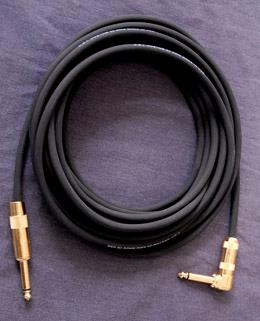 |
| A 20-footer with one straight end and one right-angle plug, the length that started it all on ebay: No gaudy graphics or wacky jacks, just the simple elegance of time-tested design. |
In guitars where the jack is on the front of the guitar (as opposed to the guitar's edge like a Les Paul), it's usually best to use an angle plug, especially in the Gibson electric hollow bodies and the Burns London guitars. As you can see from some of the Burns London guitars pictured to the left, a straight jack sticks out of the plastic pickguard, just begging to be whacked hard by a hand or an errant bar-stool edge. A good whack and you've done busted your pickguard, a costly bit to replace.
Worse yet are the Gibson semi-hollow bodies. Whack a straight plug sticking out of one of those, and you risk cracking the whole body of the guitar. We've seen it done, and it ends up pretty much being the end of the guitar. (For a complete list of which plug works with what guitar, see the list way at the end of this ad.)
Buyers outside the U.S.
Buyers outside the U.S. are welcome! We will do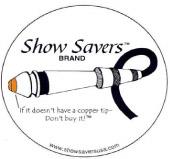 everything we can to ship to you in the cheapest and most dependable way, but shipping costs will be most likely double that of the U.S. charges. everything we can to ship to you in the cheapest and most dependable way, but shipping costs will be most likely double that of the U.S. charges.
The ebay estimate on international shipping is often incorrect. Please contact us for an estimate before buying if you are concerned about shipping charges. ALL BUYERS OUTSIDE THE U.S. MUST PAY WITH PAYPAL. No exceptions. You are responsible for any customs charges that may exist in your particular country.
Shipping
Please e-mail us 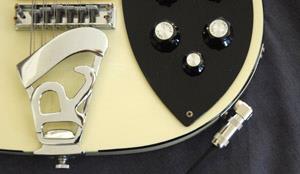 for a corrected shipping total before paying if your total with shipping FOR MULTIPLE CABLES is incorrect. The cost of shipping one cable — as computed by ebay — is correct. for a corrected shipping total before paying if your total with shipping FOR MULTIPLE CABLES is incorrect. The cost of shipping one cable — as computed by ebay — is correct.
The fine print:
Feel free to contact us if you have any questions about the item or terms of sale before you buy. We can usually answer all your concerns and smooth out the purchase process.
We ship in sturdy cardboard boxes or HEAVILY padded envelopes. We post feedback once a week. Serious buyers only please!
Not responsible for typographikull errors.
FAQs
Q: Why don't you use jacks that twist and lock the cable in place to keep it from being pulled out of the plug?
A: First off, when was the last time you broke a cable by pulling the cable out of a jack? Never, right? A DVCC cable is solidly soldered. There's no way you're gonna pull that sucker free unless you tie the plug to a phone pole; tie the wire to a car bumper; and then then drive off in the car.
I won't go so far as to say that locking plugs are a gimmick, but some have a problem. The locking design causes wire inside the cable to fail, right at the locking nut. The part of the jack that grips the wire limits wire bending to only 1/16" of cable. In a G & H jack, the bending is spread over a wider area, say a couple inches. If locking plugs were better than G & H plugs, we'd offer them instead.
Q: Why don't you use silver wire?
A: Price wise, guitar cables with silver wire are out of the reach of most musicians. DVCC made some silver-wire cables, but they didn't sell. They cost too much, customers told us, and — frankly — no one (myself 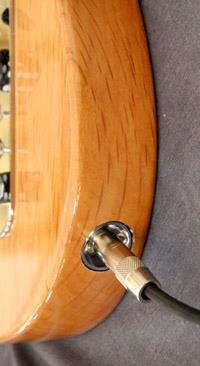 included) could hear the difference between the silver-wire cables and the copper-based cables for sale here. (DON'T write us 8,000 e-mails saying that I must be deaf not to hear the difference. Maybe you can. I can't.) included) could hear the difference between the silver-wire cables and the copper-based cables for sale here. (DON'T write us 8,000 e-mails saying that I must be deaf not to hear the difference. Maybe you can. I can't.)
Q: Why no cloth covered cables?
A: Our cables last next to forever. Fabric doesn't. It frays. Eventually it makes the cable look like a dust kitty sausage. People would laugh you off the stage if you plugged that thing into your guitar.
Further, let's face it, guitar cables spend most of their time on the floor, the same floor that people are walking on after leaving the restroom. And you know what's on the floor of a restroom.
You can wipe down a cable if it's covered with synth rubber or even vinyl, but you can't clean fabric covering a guitar cable. That means, you are essentially rubbing your hands on the floor of a restroom every time you coil up that vintage cloth-covered cable. Nice, huh?
What's more, what happens when you rub fabric on plastic? You get static electricity. Why would you want to put a static-electricity generator on your guitar?
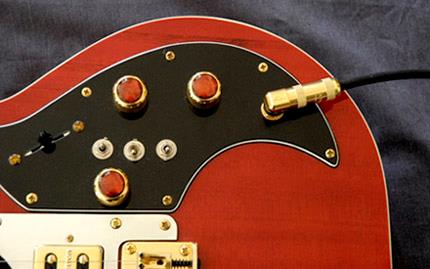 |
|

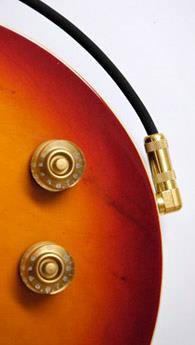
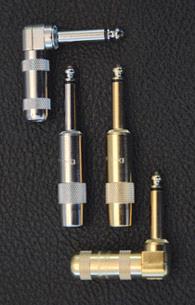

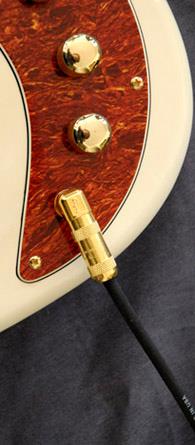
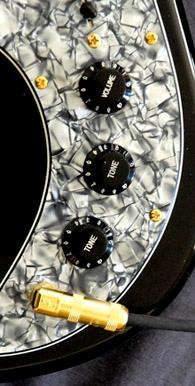
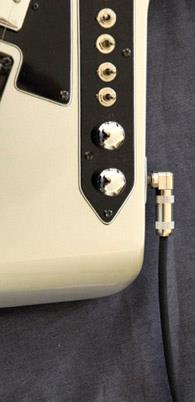
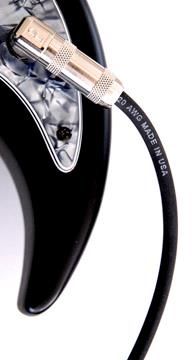


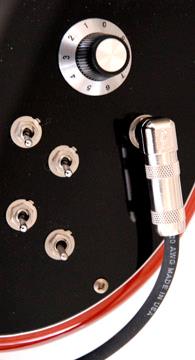









 course, the center core is stranded — not solid — for less signal loss. It has a full 2.7 mm of high-grade polyethylene insulation separating the hot center from the shield.
course, the center core is stranded — not solid — for less signal loss. It has a full 2.7 mm of high-grade polyethylene insulation separating the hot center from the shield.
 every day of every week. Our company is that small ... And it will remain that small. It's really the only way we can assure you of the highest production values and reasonable shipping times.
every day of every week. Our company is that small ... And it will remain that small. It's really the only way we can assure you of the highest production values and reasonable shipping times.  that we will replace the cable at our discretion as long as the cable has not been mistreated and has failed during normal use. A melted mess of a cable that semi-survived a house fire is NOT normal use.
that we will replace the cable at our discretion as long as the cable has not been mistreated and has failed during normal use. A melted mess of a cable that semi-survived a house fire is NOT normal use.

 everything we can to ship to you in the cheapest and most dependable way, but shipping costs will be most likely double that of the U.S. charges.
everything we can to ship to you in the cheapest and most dependable way, but shipping costs will be most likely double that of the U.S. charges.
 for a corrected shipping total before paying if your total with shipping FOR MULTIPLE CABLES is incorrect. The cost of shipping one cable — as computed by ebay — is correct.
for a corrected shipping total before paying if your total with shipping FOR MULTIPLE CABLES is incorrect. The cost of shipping one cable — as computed by ebay — is correct.
 included) could hear the difference between the silver-wire cables and the copper-based cables for sale here. (DON'T write us 8,000 e-mails saying that I must be deaf not to hear the difference. Maybe you can. I can't.)
included) could hear the difference between the silver-wire cables and the copper-based cables for sale here. (DON'T write us 8,000 e-mails saying that I must be deaf not to hear the difference. Maybe you can. I can't.)
